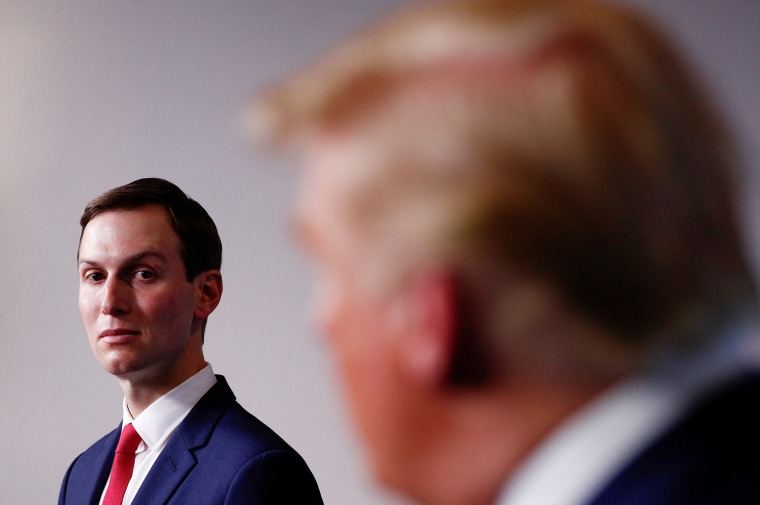It was in mid-March when Politico first reported that Jared Kushner was taking on a key role in guiding Donald Trump on combating the pandemic. A CNN White House correspondent added the same day that Kushner is "becoming more involved" in the administration's coronavirus response, with one source telling the network that the president's young son-in-law is "in total control."
As regular readers know, it wasn't long before the presidential son-in-law was reportedly leading a "shadow task force" of his own, which had the effect of "causing confusion among many officials involved in the response."
It wasn't long before Kushner's initiative was seen as a predictable failure, though we're still learning more about why his efforts fell so far short.
Katherine Eban takes a deep dive in Vanity Fair into what went wrong, explaining in detail how Kushner and his operation originally intended to launch a coordinated response to the pandemic, including a national testing strategy, before the plan, as one insider put it, “just went poof into thin air.”
The article offers a lot to chew on, but this excerpt is generating attention this morning for good reason:
Most troubling of all, perhaps, was a sentiment the expert said a member of Kushner’s team expressed: that because the virus had hit blue states hardest, a national [testing] plan was unnecessary and would not make sense politically. “The political folks believed that because it was going to be relegated to Democratic states, that they could blame those governors, and that would be an effective political strategy,” said the expert. That logic may have swayed Kushner.
The New York Times' Maggie Haberman added this morning, "[T]reating the coronavirus as a blue-state problem was a fairly widespread approach in the West Wing."
This is indefensible, but not altogether surprising. When the scope and scale of the crisis first started coming into focus, the hardest hit states were also "blue" states: New York, New Jersey, Massachusetts, Washington, et al. The fear in many circles was that Donald Trump's White House would be more passive in its response because it wouldn't much care what happened in states that didn't support the Trump/Pence ticket.
The latest reporting suggests those fears were well grounded. Indeed, it appears to paint a picture in which the Republican administration might have at least tried to respond more effectively to the crisis if, say, Oklahoma and Alabama were suffering in March the way New York and New Jersey were.
The White House's posture started to shift a bit after officials started to believe "our people" were being adversely affected by the pandemic.

